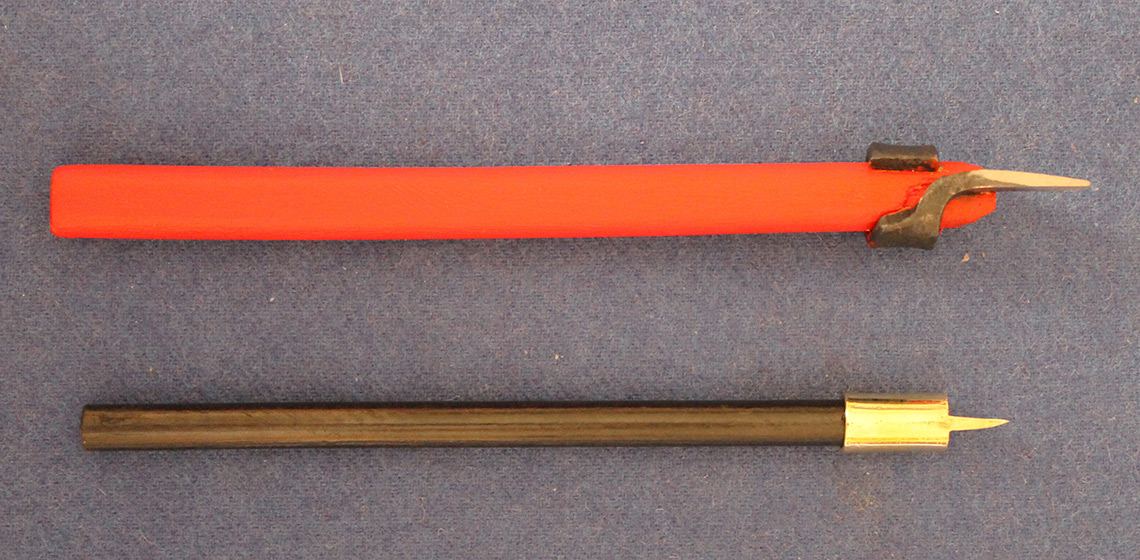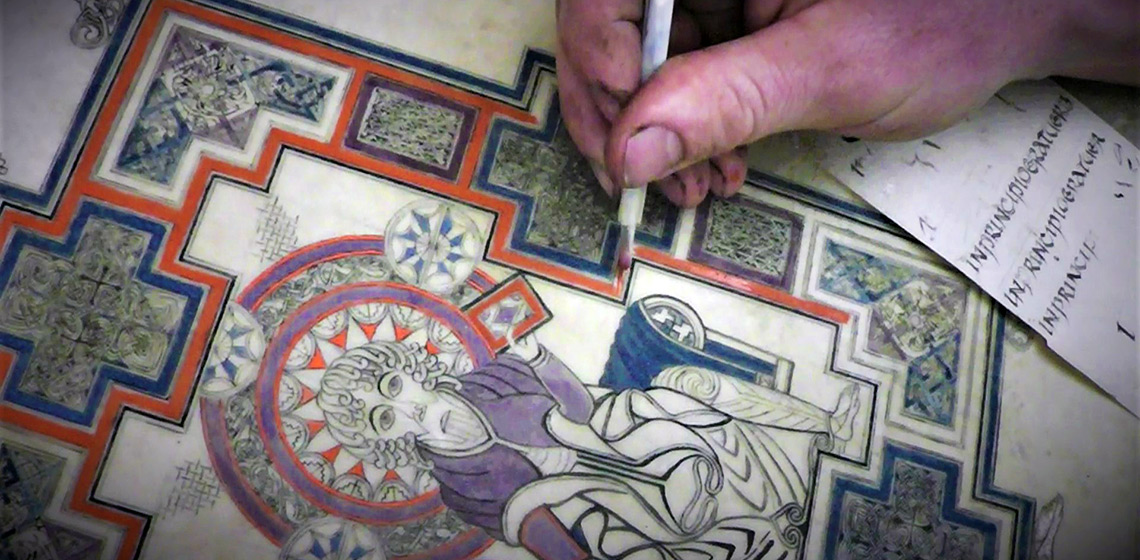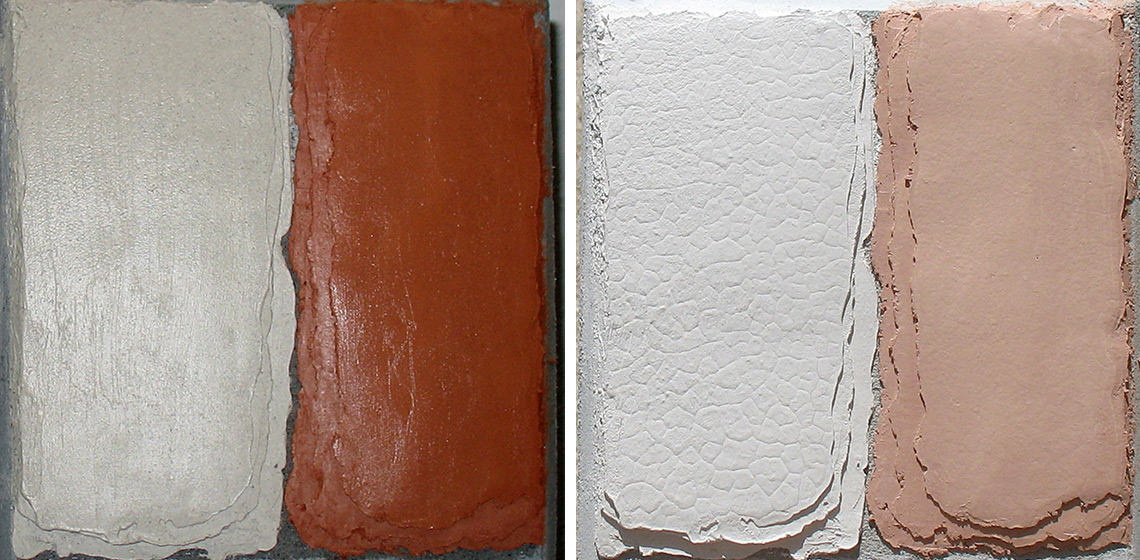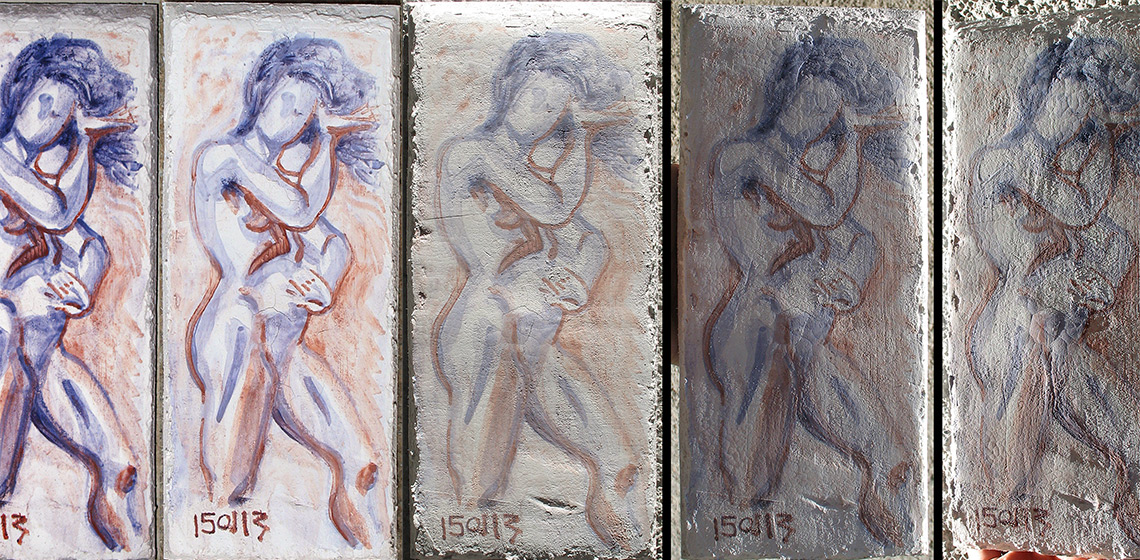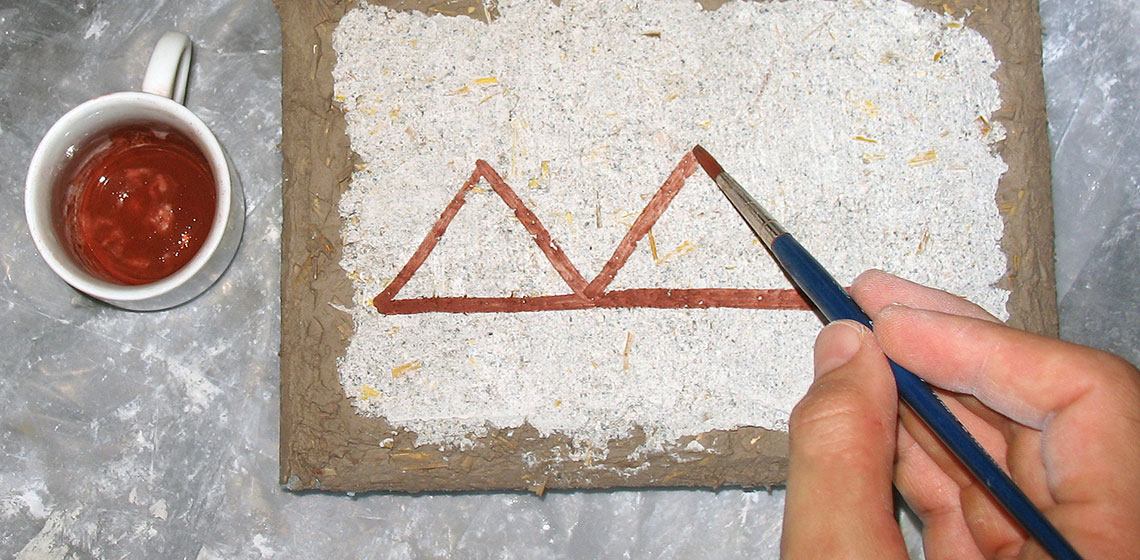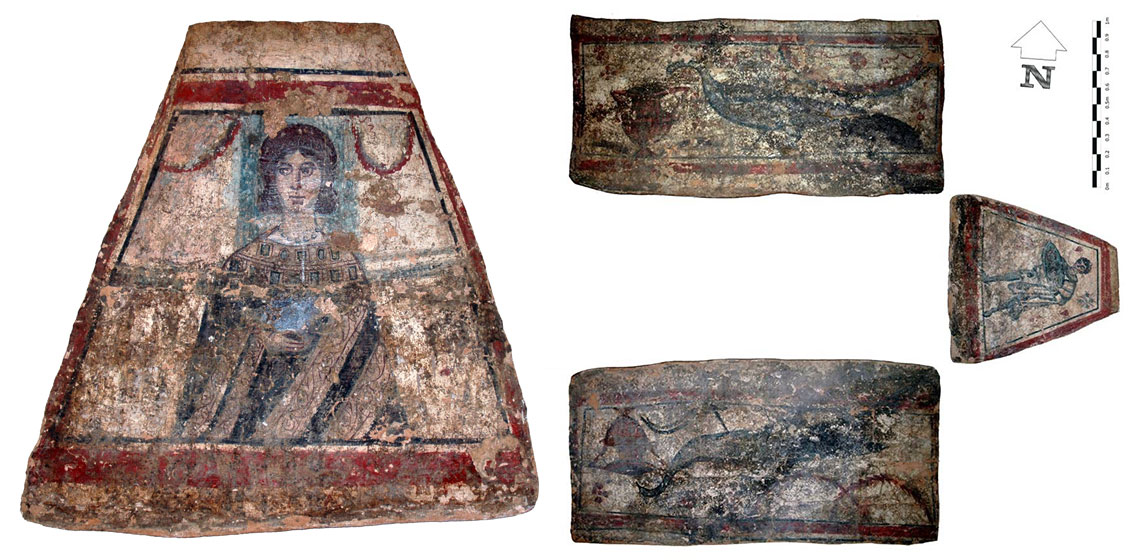painting
The Making of Roman Metal Ink Pen Nibs
Roman Bronze Ink Pen Nibs
Introduction
The main objective of this research was to establish the amount of time taken and the material lost to manufacture Roman pen nibs made for copper alloy and additionally iron. The original copper alloy ink pen nib being reconstructed for this set of experiments was published by Rees (1979, p.179c).
The original iron ink pen nib was published by Birley (1994).
Production parameters
Making the Book of Kells
Experiments with Lime Mortars containing Charcoal and Ashes
Introduction
While researching ancient lime mortar technology, we encountered a number of cases in published archaeological studies that refer to the use of ashes and charcoal as aggregates in mixtures. These mixtures were tested in a small number of experiments, and this paper presents the results.
Fresco Mixtures with Dried Lime Plaster: Cameron’s Experiments Revisited
Introduction
During the Bronze Age, the craftspeople of the eastern Mediterranean practiced a form of reuse or recycling: fragments of mortar were used as aggregates in lime mixtures intended for walls or floors (Shaw, 1973, p.222; Brysbaert, 2003, pp.168-173, pp.175-176; Jones, 2005, p.220; Brysbaert, 2008, p.118). Such a mixture was found in a house in the Akrotiri settlement of Santorini, in a part of the wall that was intended to be painted (Jones, 2005, p.220).
Painting Bronze Age Plaster from Thebes Boeotia
The premise
The author is currently studying for a PhD in experimental archaeology at the University of the Aegean. The focus of the research involves the recreation of a 4th Century B.C. wall painting (Tomb of Persephone, Vergina) using the same pigments and painting method that was used by the ancient painter. In this project, we sought to identify the painting technique used, and wanted to demonstrate the way in which the wall was painted. The technique that was used in the tomb is a variation of the fresco technique, which is why we examined similar methods.


